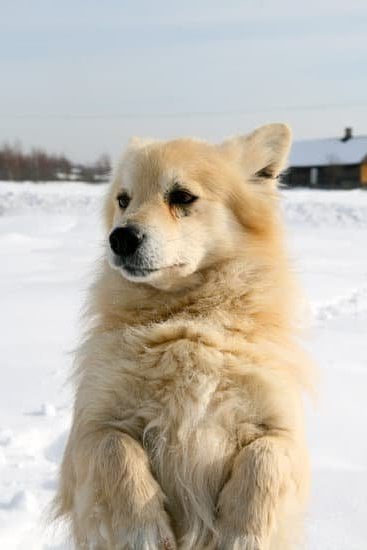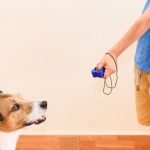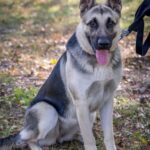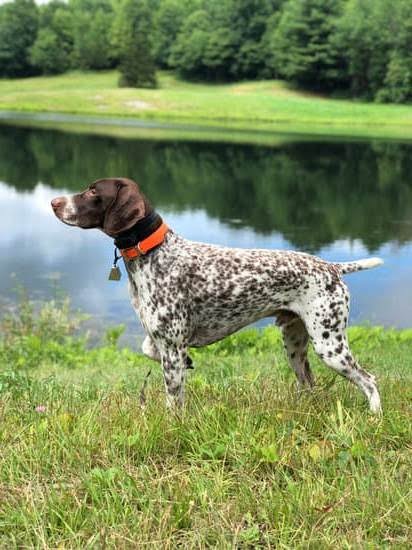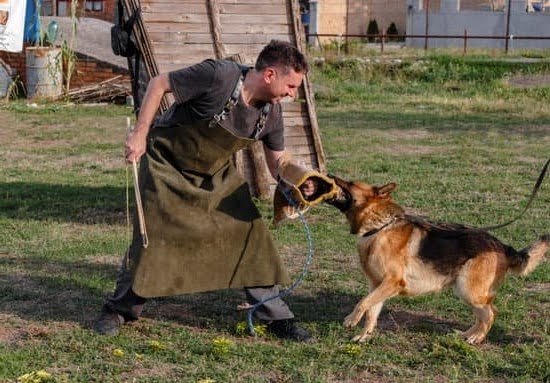Having a well-trained deer hunting dog is essential for success in the field. These specially trained dogs can greatly improve hunting outcomes by tracking, retrieving, and flushing game with precision and efficiency. In this article, we will explore the various aspects of training a deer hunting dog, from choosing the right breed to advanced hunting skills.
When it comes to deer hunting, having a trained dog by your side can make all the difference. A well-trained dog can help locate wounded or downed game that may be difficult for hunters to find on their own. Additionally, these dogs are skilled at tracking scents and can alert hunters to the presence of deer or other game.
Choosing the right breed is an important first step in training a deer hunting dog. Certain breeds are known for their natural instincts and abilities in the field, such as Labrador Retrievers and German Shorthaired Pointers. When selecting a breed, it’s important to consider characteristics like agility, endurance, and trainability.
In the following sections of this article, we will delve into the specifics of training a deer hunting dog. From basic obedience training to advanced scent tracking techniques, we will provide you with step-by-step instructions and tips for success. So whether you’re just starting out with a new pup or looking to improve your current hunting companion’s skills, this article has got you covered.
Choosing the Right Breed
When it comes to training a deer hunting dog, one of the most important decisions you will make is choosing the right breed. Not all dog breeds are well-suited for deer hunting, so it’s crucial to select a breed that possesses the necessary characteristics and traits for success in the field. Here are some considerations when choosing a breed:
Breed Suitability
While virtually any dog can be trained for deer hunting to some extent, certain breeds have innate abilities and instincts that make them particularly well-suited for this task. Some popular deer hunting dog breeds include Labrador Retrievers, German Shorthaired Pointers, and Bloodhounds. These breeds typically exhibit the necessary qualities such as endurance, intelligence, scenting ability, and a strong prey drive.
Traits to Look For
When evaluating potential deer hunting dog breeds, there are specific traits you should look for. Good scenting ability is crucial since the dog needs to track its prey using scent trails. Intelligence is also important as it enables dogs to understand and follow commands effectively during training sessions. Furthermore, breeds with a strong prey drive tend to be more motivated in pursuing and retrieving game. Consider these factors when making your choice.
Temperament
Another significant aspect to consider is the temperament of the breed. Deer hunting can involve long hours in challenging terrains, so a dog with an appropriate temperament will fare better in such conditions. Ideally, you want a breed that is energetic, trainable, and able to handle both physical exertion and stress without becoming anxious or aggressive.
Remember that there may be variations within each breed in terms of individual temperament and aptitude for hunting, so it’s essential to assess each dog on an individual basis before making your final decision. Additionally, consult experienced hunters or professional trainers who can provide guidance based on their expertise and help you select the breed that aligns best with your hunting goals and preferences.
By choosing the right breed, you are setting the foundation for success in training your deer hunting dog.
Basic Obedience Training
Obedience training is an essential foundation for any deer hunting dog. It ensures that the dog will respond promptly and reliably to commands, which is crucial for a successful hunting experience. Proper obedience training helps in controlling the dog in various situations and ensuring its safety as well as the safety of other hunters. Here are some key aspects of basic obedience training that every deer hunting dog owner should focus on:
- Starting with Basic Commands: Begin by teaching your dog basic commands such as sit, stay, and come. These commands lay the groundwork for more advanced training later on. Use positive reinforcement techniques such as treats, praise, and rewards to motivate your dog to learn and obey these commands consistently.
- Consistency and Repetition: Dogs thrive on consistency and repetition, so it’s important to be patient and practice these commands regularly until they become second nature to your dog. Be consistent with your verbal cues and hand signals so that your dog can easily understand what is expected of them.
- Leash Training: Leash training is another critical aspect of basic obedience training. Teach your dog to walk calmly on a leash without pulling or dragging you around. This skill is not only essential for control during hunting but also ensures the safety of your dog when walking through busy streets or crowded areas.
- Focus and Attention: Train your deer hunting dog to maintain focus and attention on you even amidst distractions. Use techniques like eye contact exercises, “leave it” command training, and controlled exposure to different environments where there may be distractions such as other animals or loud noises.
Remember, patience and positive reinforcement are key when it comes to basic obedience training for deer hunting dogs. By investing time and effort into this foundation, you’ll set your dog up for success in all future training endeavors.
Next Steps: Scent Training
Once you have established a strong foundation in basic obedience training, it’s time to progress to the next crucial step: scent training. Scent training is essential for a deer hunting dog as they need to be able to track and locate game effectively. By introducing your dog to different scents and associating them with specific game, you can enhance their hunting skills and their ability to work alongside you in the field.
Introducing Scent Training
Begin by selecting specific scents associated with deer, such as shed antlers or deer dummies that are infused with real deer scent. Allow your dog to familiarize themselves with these scents by sniffing them and showing interest. Offer praise and treats when they display enthusiasm for the scent.
Gradually, start hiding these scented items in various locations indoors or outdoors. Encourage your dog to use their nose to locate the hidden item while using commands such as “find it” or “track.” As your dog becomes more proficient at finding the hidden scent, increase the difficulty by hiding the item in harder-to-find places or introducing distractions that simulate real hunting conditions.
Repeat these scent training exercises consistently until your dog becomes skilled at tracking and locating game based on scent alone. Remember to always reward and praise your dog for their success during this training process, as positive reinforcement plays a significant role in their motivation and learning.
Introducing Scent Training
Importance of Scent Training in Deer Hunting
In the world of deer hunting, scent is one of the key factors that can make or break a successful hunt. Deer possess an exceptional sense of smell, and it is crucial for a hunting dog to be able to detect and differentiate scents in order to track down game effectively.
This is where scent training comes into play. By introducing your deer hunting dog to different scents and associating them with specific game, you can significantly enhance their tracking abilities.
Tips for Introducing Dogs to Different Scents
When starting scent training with your deer hunting dog, it is important to begin with mild scents that are easier for them to recognize. Consider using natural scents such as deer urine or other animal scents that are commonly found in the area where you plan to hunt.
One effective way to introduce these scents is by using scent-drenched items such as cotton balls or small pieces of cloth. Start by placing the item near your dog’s feeding area or in their bedding to allow them to familiarize themselves with the new scent. Gradually increase the intensity of the scent and move the items around different areas to encourage your dog’s ability to track.
Associating Scents with Specific Game
As your deer hunting dog becomes more adept at recognizing different scents, it is important to associate each scent with a specific game animal. This conditioning process can be achieved through positive reinforcement techniques.
One approach is to introduce a particular scent before rewarding your dog with praise, treats, or playtime when they successfully locate a hidden object associated with that scent. Over time, your dog will start to associate certain scents with rewards, leading them to become more focused and motivated during actual hunts.
Remember that patience and consistency are key when it comes to introducing scent training. Each dog may progress at a different pace, so it is important to tailor the training to their individual abilities and strengths. With time and practice, your well-trained dog will become an invaluable asset in your deer hunting adventures.
Tracking and Retrieval Training
Training a dog to track deer and retrieve game is a crucial skill for any deer hunting dog. This section will provide step-by-step instructions on how to introduce tracking commands and techniques to your canine companion.
First, it is important to start with the basics of obedience training before moving on to tracking and retrieval. Make sure your dog has mastered commands such as sit, stay, and come, as these will serve as the foundation for more advanced training.
To begin tracking training, start by introducing your dog to the scent of deer. You can use a piece of deer hide or a training tool that has been scented with deer scent. Allow your dog to sniff the scent and get familiar with it. Once they are comfortable with the scent, hide a small piece of cloth scented with the deer scent in an area with minimal distractions.
Next, bring your dog to the starting point of the trail and give them the command “Find it” or any other command you choose for tracking. If they are unsure of what to do, encourage them gently by pointing in the direction of the trail or using a treat as motivation.
As your dog progresses in their training, you can gradually increase the difficulty level by making the trails longer or introducing more distractions along the way. You can also start incorporating commands such as “Track” or “Follow” to indicate that they should focus on following the trail.
Once your dog successfully tracks and finds the hidden item at the end of each trail, reward them with praise and treats. This positive reinforcement will help reinforce their tracking abilities and motivate them during future training sessions.
When it comes to retrieval training, start by teaching your dog basic fetching skills using toys or balls. Once they have mastered retrieving objects in controlled environments, you can move on to teaching them how to retrieve game during hunts.
Introduce them gradually to game-scented dummies or decoys that resemble the size and shape of the game they will be retrieving. Start with short distances and gradually increase the distance as your dog becomes more proficient.
Use commands such as “Fetch” or “Take it” to encourage your dog to retrieve the game. Praise and reward them for successfully retrieving, and gradually fade out the use of treats as they become more reliable in their retrieval skills.
Keep in mind that tracking and retrieval training requires patience, consistency, and a lot of practice. Each dog is different, so adjust your training approach based on your dog’s progress and individual needs. With time and effort, your deer hunting dog will become skilled in tracking and retrieving game, improving your overall hunting success.
| Command | Description |
|---|---|
| “Find it” | Gives the command for the dog to start tracking |
| “Track” or “Follow” | Indicates that the dog should focus on following the trail |
| “Fetch” or “Take it” | Commands the dog to retrieve an object or game |
Socializing with Other Hunting Dogs
Socializing with Other Hunting Dogs
Socializing with other hunting dogs is a crucial aspect of training deer hunting dogs. Not only does it help develop their social skills and manners, but it also enhances their ability to work well in a group setting during hunts. When dogs are properly socialized with other hunting dogs, they are more likely to cooperate, communicate effectively, and be more focused on the task at hand.
One effective way to socialize deer hunting dogs with other hunting dogs is through controlled introductions. Begin by selecting a suitable location that is neutral territory for both dogs. It can be an open field or a dog park where interaction can take place without distractions. Gradually introduce the two dogs to each other while keeping them on a leash and observing their behavior closely.
During the initial interactions, pay attention to their body language and monitor for signs of aggression or anxiety. If both dogs appear relaxed and friendly, you can allow them to interact off-leash while still being closely supervised. Encourage positive interactions such as playing together or engaging in cooperative activities like retrieving objects.
Socializing with Other Hunting Dogs Tips
| Tips | Description |
|---|---|
| Start early | Begin socializing your deer hunting dog at an early age to establish good habits and behavior. |
| Expose to various settings | Take your dog to different environments such as woods, fields, and bodies of water so they become comfortable in various hunting scenarios. |
| Supervise playtime | Always supervise interactions between your dog and other hunting dogs to prevent fights or injuries. |
| Positive reinforcement | Reward your dog with praise or treats for good behavior and successful interactions with other hunting dogs. |
| Exposure to different breeds | Expose your dog to different types of hunting dog breeds to build familiarity and acceptance. |
Remember that each dog has its personality, so it is essential to monitor the interactions between them closely. Some dogs may naturally get along better with certain breeds than others. If any signs of aggression or discomfort persist, consult a professional dog trainer who specializes in socialization techniques.
By investing time and effort into socializing deer hunting dogs with other hunting dogs, hunters can greatly enhance their team’s bonding, cooperation, and overall success during hunts. Additionally, well-socialized hunting dogs tend to have improved obedience and are easier to handle in various hunting scenarios.
Gun Sensitivity Training
Gun sensitivity training is a crucial component of training a deer hunting dog. It is essential to ensure that the dog is comfortable and unaffected by the sound and sensation of gunfire. This training not only enhances the safety of the dog and the hunter but also allows for effective hunting experiences without fear or distraction.
Below are some strategies to gradually expose dogs to gunfire:
- Sound Conditioning: Start by desensitizing the dog to loud noises in a controlled environment. Begin with low-intensity sounds, such as recordings of gunshots, and gradually increase the volume over multiple sessions. Use positive reinforcement techniques, such as treats or praise, to associate these sounds with positive experiences.
- Realistic Simulations: Once the dog becomes accustomed to recorded gunshots, it’s time to progress to more realistic simulations. Find an open area away from populated areas and use blanks or starter pistols to mimic gunfire sounds during training sessions. Again, use positive reinforcement to reward calm behavior whenever gunshots occur.
- Field Exercises: Transitioning from simulated gunfire to real field exercises can be challenging for some dogs. Start in a controlled environment where there are no distractions and introduce shooting at a distance while engaging in basic obedience commands with the dog. Gradually decrease the distance between the dog and shooter while continuing obedience practice until the dog remains composed even with close-range gunfire.
- Progressive Exposure: Each dog will have its own pace when it comes to gun sensitivity training. It’s important to remember not to rush the process and always prioritize the safety and well-being of both the dog and handler. If at any point during training, signs of fear or stress are observed, step back and revisit previous stages before progressing further.
By following these strategies for gun sensitivity training, hunters can ensure that their deer hunting dogs remain focused, calm, and unphased by firearm noise while out on hunts. Training in this area will reinforce safety and allow for a more successful and enjoyable hunting experience for both the dog and the hunter.
Advanced Deer Hunting Skills
Training a deer hunting dog involves more than just basic obedience and scent training. To truly enhance their hunting abilities, dogs can be taught advanced skills that will make them even more effective in the field. This section will cover some of these advanced techniques that can take your dog’s hunting prowess to the next level.
One of the advanced skills that can be taught to a deer hunting dog is advanced scent tracking. By gradually increasing the difficulty of scent trails, dogs can learn to follow fresher tracks over longer distances. Using mock trails with decreasing time gaps between laying the trail and having the dog track it can help develop their ability to track live game more effectively.
Another important skill for a deer hunting dog is treeing. This is particularly useful when hunting animals such as raccoons or bobcats that seek refuge in trees. Training a dog to bark at the base of a tree where an animal has taken shelter can greatly assist hunters in locating their target.
Additionally, flushing techniques can be taught to dogs who are used for upland bird hunting in addition to deer hunting. Dogs can be trained to flush out birds from heavy cover by using hand signals or verbal commands, allowing hunters a better shot at their target.
While these skills may require more time and effort to teach, they can greatly improve your dog’s effectiveness as a deer hunting companion. As with any training, patience and consistency are key when teaching these advanced techniques.
By investing time and effort into training your deer hunting dog with these advanced skills, you’ll have a valuable asset by your side during hunts. These dogs will not only be able to navigate challenging environments but also provide you with opportunities for a successful hunt that may have otherwise been missed.
Troubleshooting Common Training Challenges
Training a deer hunting dog can be a rewarding but challenging endeavor. Despite your best efforts, you may encounter some common training challenges along the way. It is important to recognize these obstacles and have strategies in place to overcome them. This section will address some of the most common training challenges faced by deer hunting dog owners and provide practical solutions.
One common challenge is distractions during training sessions. Dogs can easily get distracted by their surroundings or other animals, which can make it difficult for them to focus on their training tasks. To overcome this challenge, it is crucial to start training in a controlled environment with minimal distractions. Gradually increase the level of distractions as your dog becomes more proficient in following commands.
Another common challenge is obedience regression. Dogs, especially young ones, may go through phases where they seem to forget their training and become unresponsive to commands they previously mastered. This regression can be frustrating for dog owners, but it is important not to lose patience or resort to punishment. Instead, go back to basics and reinforce the fundamental commands through consistent practice and positive reinforcement.
| Common Training Challenge | Solution |
|---|---|
| Distractions during training sessions | Start training in a controlled environment with minimal distractions; gradually increase distractions as the dog progresses |
| Obedience regression | Go back to basic command training; reinforce fundamentals through consistent practice and positive reinforcement |
Lastly, another hurdle that may arise during deer hunting dog training is inconsistency in following commands in different environments or situations. Dogs need consistent reinforcement and practice across various settings to generalize their training. To overcome this challenge, gradually introduce new environments and situations during training, reinforcing commands in each scenario. This will help the dog understand that commands are applicable regardless of the surroundings.
By recognizing and addressing these common training challenges, you can ensure a smoother and more effective journey towards training your deer hunting dog. Remember to remain patient and consistent, as every dog learns at its own pace. Troubleshooting these challenges will ultimately contribute to the development of a well-trained deer hunting dog that can enhance your hunting success.
Safety Considerations
The Importance of Safety during Deer Hunting with Dogs
When it comes to deer hunting with dogs, ensuring the safety of both the dog and the hunter is paramount. Safety considerations should be incorporated into every aspect of training and hunting to prevent accidents or injuries. By following some essential guidelines, hunters can minimize risks and maximize their enjoyment of the sport.
Knowing the Hunting Area
Before embarking on a hunting expedition with a deer hunting dog, it is crucial to thoroughly familiarize oneself with the hunting area. This includes understanding any local regulations or restrictions that may apply to hunting with dogs, as well as being aware of potential hazards such as uneven terrain or bodies of water that may pose a threat to a dog’s safety.
It is also important to note any dangerous wild animals or poisonous plants that could harm both the dog and the handler.
Protective Gear for Dogs
Equipping dogs with appropriate protective gear can significantly enhance their safety in the field. Consider outfitting your dog with a bright-colored vest or jacket, which not only makes them more visible but also protects them from brush and thorny vegetation. Additionally, invest in protective boots for your dog’s paws to shield them from sharp objects or extreme temperatures.
Utilizing Leashes and GPS Tracking Devices
Using a leash is an essential safety measure when training and hunting with a deer hunting dog. A sturdy leash allows you to control your dog’s movements and prevents them from running into unsafe situations or potentially hazardous areas. Furthermore, incorporating GPS tracking devices into your gear can provide an added layer of security by allowing you to locate your dog quickly if they stray too far during tracking or retrieve tasks.
Firearm Safety
In addition to considering the safety of the dogs involved, firearm safety is paramount during deer hunting with dogs. Hunters should always follow proper gun safety protocols, including keeping firearms pointed in a safe direction and ensuring that the safety is engaged until ready to shoot. It is crucial to practice shooting skills regularly and be familiar with the sound and recoil of your firearm to prevent accidental injury or death to both yourself and those around you.
By prioritizing safety considerations during deer hunting with dogs, hunters can create a secure environment for both themselves and their canine companions. Remember, accidents can happen even with well-trained dogs, so it is important to continually assess potential risks and make safety a top priority. With careful preparation and adherence to recommended guidelines, hunters can confidently enjoy the thrilling experience of deer hunting alongside their loyal four-legged partners.
Conclusion
In conclusion, having a well-trained deer hunting dog is absolutely essential for achieving success in the field. Throughout this article, we have highlighted the importance of training a hunting dog and how it can vastly improve hunting outcomes. From choosing the right breed to troubleshooting common challenges, we have covered a range of topics to help you effectively train your dog.
One of the key takeaways from this article is the significance of basic obedience training as a foundation for deer hunting training. Teaching your dog basic commands such as sit, stay, and come not only establishes control but also ensures their safety during hunts. Scent training is another crucial aspect discussed here, as it enables your dog to track game effectively. Introducing different scents and associating them with specific game will enhance your dog’s ability to locate deer.
Furthermore, advanced training techniques were explored in this article to enhance your dog’s hunting abilities. From advanced scent tracking to treeing and flushing techniques, these skills can take your hunts to the next level. Additionally, it is important to address safety considerations while hunting with dogs. Ensuring the well-being of both the dog and the hunter should always be a top priority.
Investing time and effort into training a deer hunting dog is undoubtedly worth it. A well-trained dog not only improves hunting outcomes but also forms a strong bond with its owner.
By following the tips and techniques discussed in this article, you can set yourself up for success in training your own deer hunting companion. So don’t wait any longer – start training today and reap the benefits of having a skilled and reliable partner by your side in the field.
Frequently Asked Questions
Can you train a dog to deer hunt?
Yes, it is possible to train a dog to deer hunt. However, it requires a specific set of training techniques and the right breed of dog. Typically, scent hounds like Bloodhounds or Coonhounds are well-suited for deer hunting due to their keen sense of smell and tracking abilities.
The training process involves teaching the dog to recognize and follow deer scents, trail wounded deer, and indicate when they have located a target. It also requires obedience training to ensure that the dog can respond to commands while in the field. Patience, consistency, and positive reinforcement are key in successfully training a dog for this specialized type of hunting.
How long does it take to train a hunting dog?
The length of time it takes to train a hunting dog depends on various factors such as the breed, age, prior training experience, and individual temperament of the dog. On average, it can take several months up to a year or more to fully train a hunting dog for specific tasks such as tracking, retrieving, or pointing game. Basic obedience training lays the foundation for further hunting-specific training and typically takes around 6-8 weeks.
Advanced training stages involve introducing fieldwork skills and refining hunting behaviors through consistent practice and reinforcement over an extended period. Ultimately, the timeline will vary based on each dog’s unique learning capabilities and the complexity of the desired skills.
How do you discipline a hunting dog?
Discipline is an essential aspect of training any hunting dog but must be approached with fairness and respect to maintain a healthy working relationship between handler and canine companion. Positive reinforcement is generally more effective than using physical punishment or harsh corrections with hunting dogs as it helps promote trust and motivation during training sessions.

Welcome to the blog! I am a professional dog trainer and have been working with dogs for many years. In this blog, I will be discussing various topics related to dog training, including tips, tricks, and advice. I hope you find this information helpful and informative. Thanks for reading!

